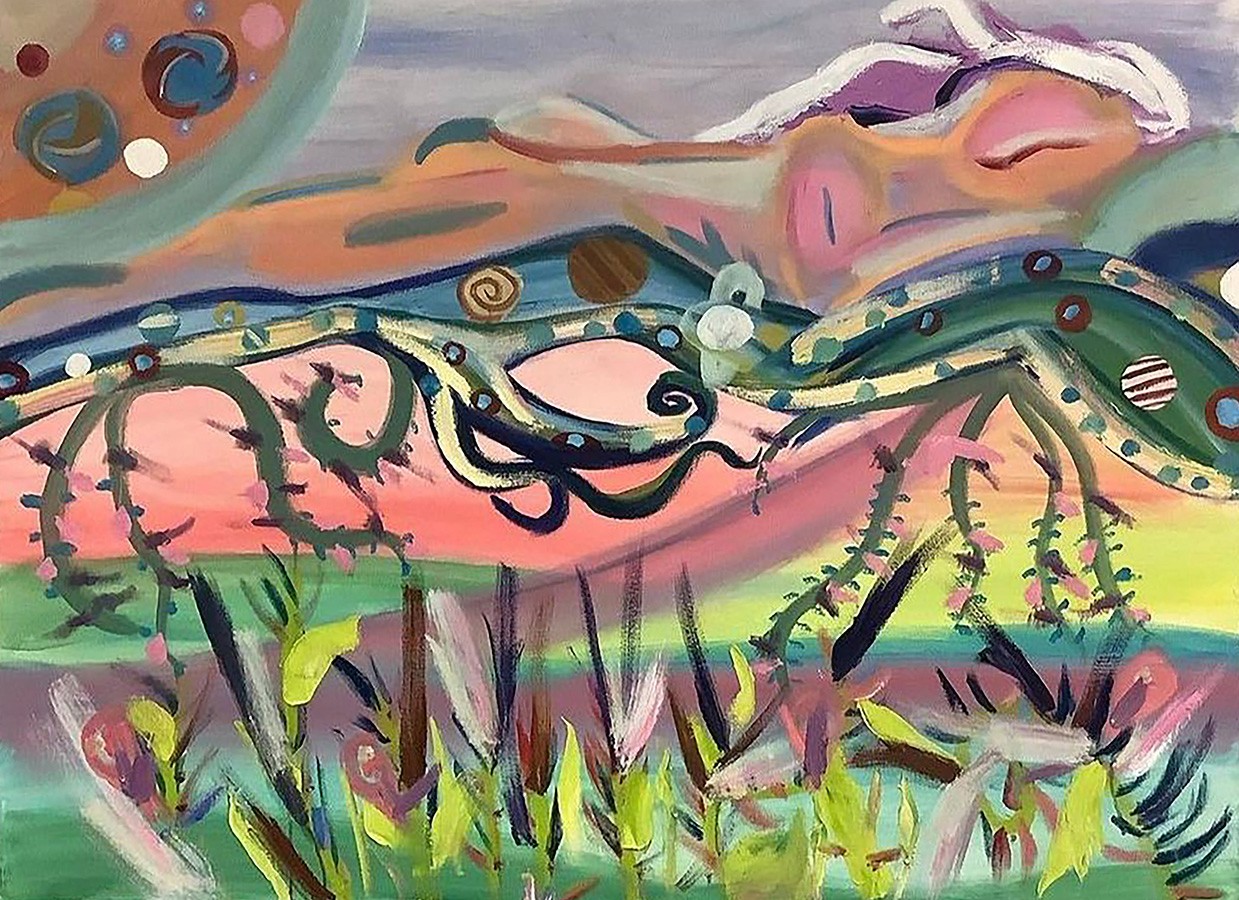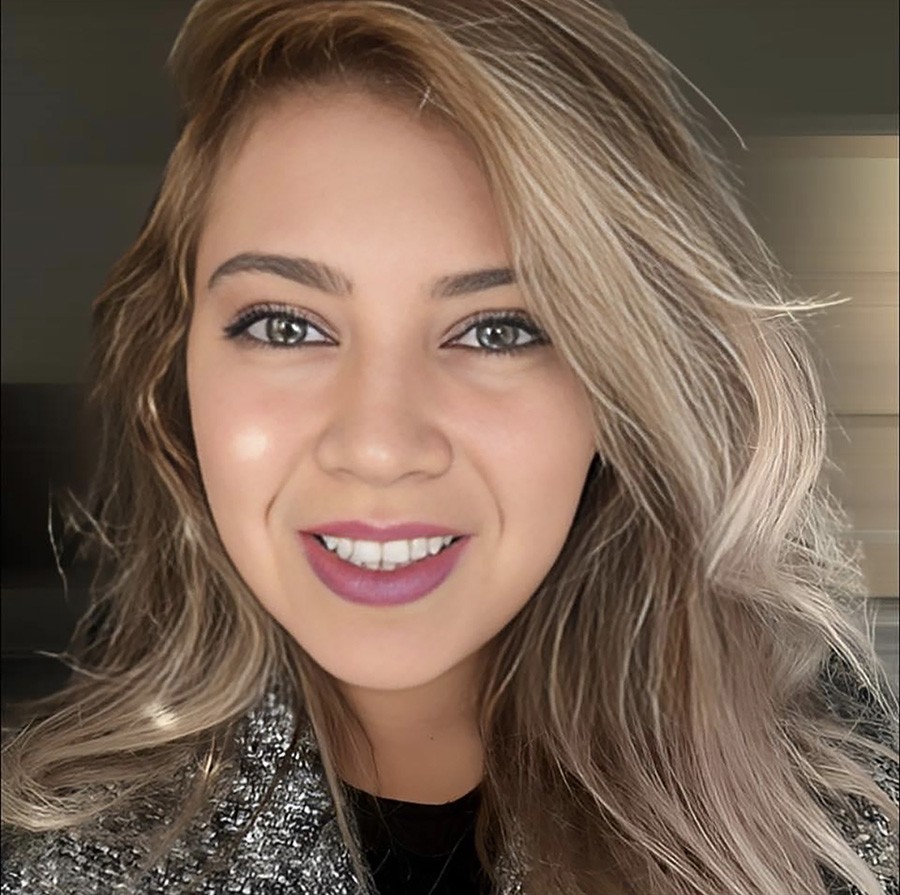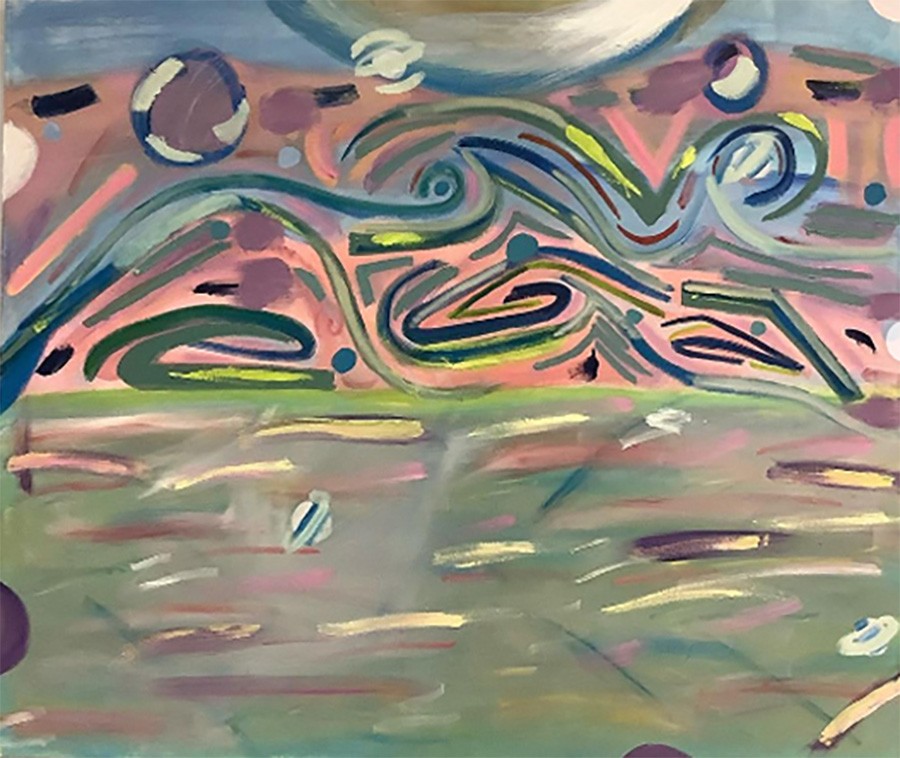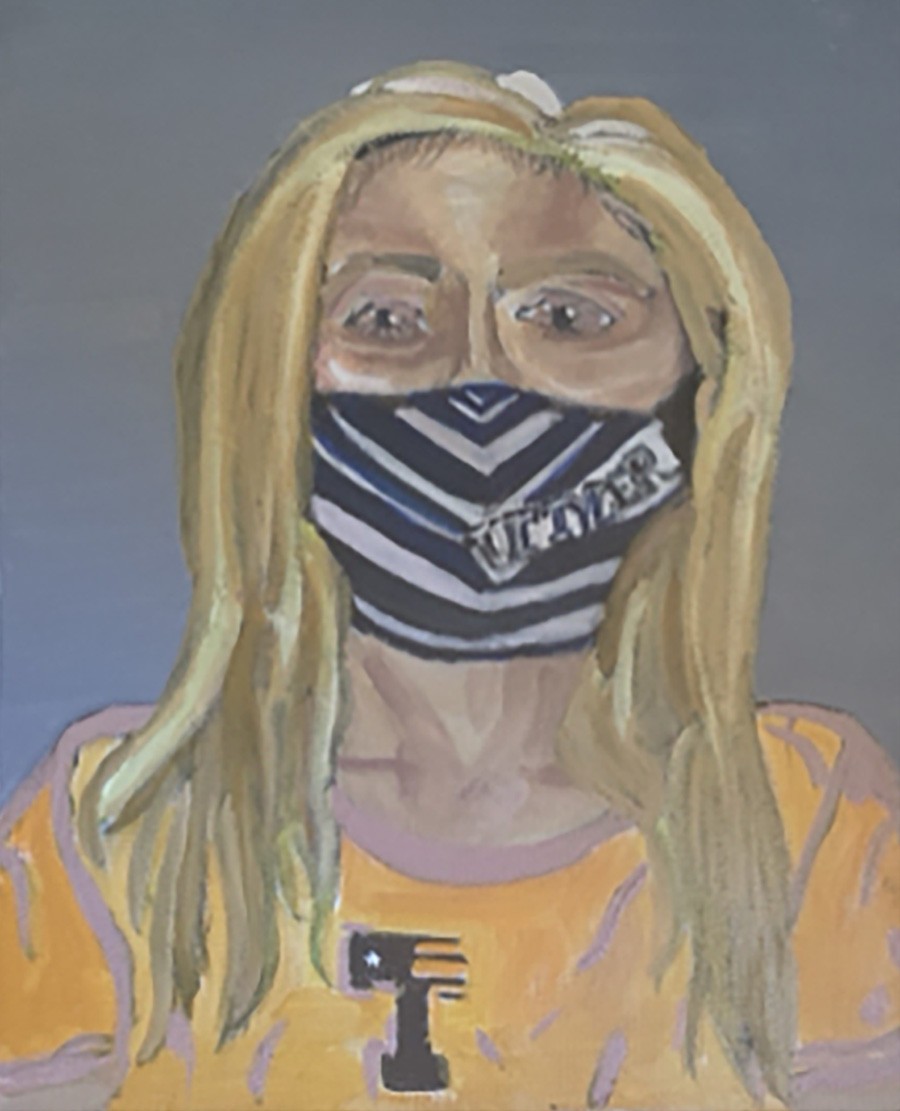






Inside the Artist’s Studio
Have You Any Dreams You’d Like to Sell: Gabriela Cardenas
Derrick White
“A couple of the most crucial factors visual art and painting have brought to my life are sanity and the therapy for loving creation and gaining personal joy from other people’s interpretations. Understanding the fact visual art has a place in this world,” asserts local artist, Gabriela Cardenas. Gabriela started attending The University of Texas at Tyler to pursue a nursing degree but then she decided to switch and study art while she was grieving the death of her grandmother. Gabriela states, “Sometimes my lifestyle of overworking myself overshadows my work and dreams. Sometimes I must realize it is okay to breathe and not always overwork myself. I think sadness follows me so easily if I let it and just remind myself there is more than one purpose for life, such as creation.” During her grandmother’s passing, she remembers how much she would constantly draw and create and then discovered she did not want to lose the feelings connected to the creative process. She wanted to have them grow. She explains, “I began school at the University of Texas at Tyler as a nursing student but sitting in class all I did was draw and then I heard my political professor say, ‘If you want to go to school for art, go do it, whatever you do, go and do it, but do it with all of your strength.’”
Some of Gabriela’s paintings reek of a surreal, dreamlike, other world created using fluid brushstrokes and pastel colors and teeming with organic shapes with all their unpredictability. Other pieces address some of the concerns of the pandemic and its impact on daily life. She explains, “My educational experience with art was very intriguing and engaging. Believing in myself was the biggest step to successful performance at the university level. My drive and desire to experience it were not easy but extremely rewarding. Professionalism helped me as an artist since there were times more difficult than others. For example, when places experienced shutdowns and had to work from home, there was no question students and professors wondered when we would see each other but having plans set in place reminded us of our purpose. Having the possibility to make more strategic workplaces was necessary as we continued through the semester. Having the opportunity to meet other artists gave me the reassurance there was a world in art. Whether it was in our own art practices or studies, the relevant terms of art followed our work locally and internationally. When talking to peers, learning from their experiences helped me develop and discover art exhibitions to discover what exactly different artists strived to capture in their current work. In general, knowing what is sought after in contemporary art galleries helped me expand the ideas behind my own artwork.”
Cardenas paints using oil paint on canvas with a folky, flat, stylized rendering of figures. “The medium I use is oil and canvas. My favorite opportunity for my artwork is finding a frame accenting my canvas. Oil is also one of the most lasting paints of any other medium. I played with my oils and added acrylic or tempera, not doing this often is important as painting conservation is more critical,” she states. My favorite artist is Van Gogh because he always worked despite his troubles (Wikipedia, “Vincent van Gogh, Dutch Post-Impressionist painter who posthumously became one of the most famous and influential figures in Western art history. In a decade, he created about 2,100 artworks, including around 860 oil paintings, most of which date from the last two years of his life. They include landscapes, still lifes, portraits, and self-portraits, and are characterized by bold colors and dramatic, impulsive, and expressive brushwork contributing to the foundations of modern art. Not commercially successful, he struggled with severe depression and poverty, eventually leading to his suicide at age thirty-seven. Van Gogh suffered from psychotic episodes and delusions and though he worried about his mental stability, he often neglected his physical health, did not eat properly, and drank heavily”). My favorite living artist is Professor Alexis Serio, for her dedication to painting and working at the university (from alexisserioart.com, “My work is a metaphor for time, memory, and perception. My paintings are philosophical and formal investigations about the visual perception of light and color, the personal experience of remembering and inventing, and the natural illusiveness of time”).
Gabriela continues, “The goals I want to experience long-term and short-term are vastly different from each other. My short-term goal is to show my work publicly rather than sell. I would much rather be published in France and Canada rather than worry if I did or did not receive a commission or make a sale. The purpose is to show as many viewers as possible the aesthetic beauty of my work’s existence and follow through with exhibiting. My long-term goal is to eventually invest enough in my artwork to be displayed abundantly at stores such at At Home, World Market, etc.”
Gabriela concludes, “If I had it my way, I’d continue to work more in art but as an art historian, as this expresses the value of written work that doesn’t age physically. However, I see myself like Vasari (Wikipedia, “Giorgio Vasari, (1511 – 1574) was an Italian Renaissance Master, who worked as a painter, architect, engineer, writer, and historian, who is best known for his work The Lives of the Most Excellent Painters, Sculptors, and Architects, considered the ideological foundation of all art-historical writing, and the basis for biographies of several Renaissance artists, including Leonardo da Vinci and Michelangelo”). Gabriela adds, “I love both world artwork and art history.”










